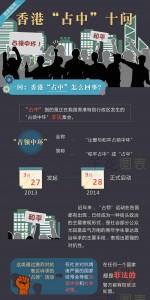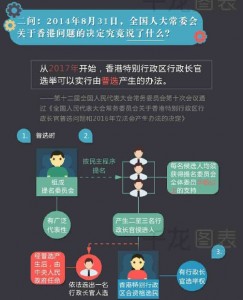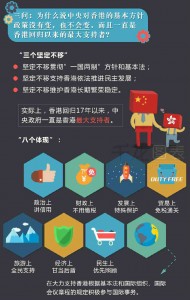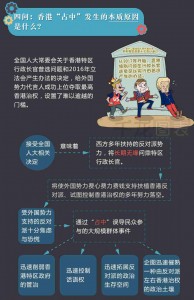This is part 2 of a five part translation of infographic referred to as the “Hong Kong ‘Occupy Central’ Ten Questions Infographic Version” 香港 “占中” 十问 漫画版 that was published on Weibo Friday, October 4, 2014, in response to the then ongoing Occupy Central protests in Hong Kong. Read more about the background of this info-ganda here.
Monthly Archives: October 2014
Infographic Department of the CCP (Part 1 of 5)
This is part 1 of a five part translation of infographic referred to as the “Hong Kong ‘Occupy Central’ Ten Questions Infographic Version” 香港 “占中” 十问 漫画版1 that was published on Weibo Friday, October 4, 2014, in response to the ongoing Occupy Central protests in Hong Kong. It has since circulated in Chinese state media reports, inspiring Didi Tatlow to write a short article about it for Sinosphere, the China blog of The New York Times. Although the authorship is, as Tatlow points out, “unclear” given the wide circulation it has received in state media, it seems likely that it was created by the Publicity Propaganda Department of the Chinese Communist Party 中共中央宣传部, or a related organ. Regardless of who created it, it is a great example of contemporary Chinese propaganda:
 |
Hong Kong “Occupy Central” Ten QuestionsSigns: Occupy Central! Peace! Question 1: How did Hong Kong’s “Occupy Central” start?“Occupy Central” refers to the illegal gathering which is currently taking place in our nation’s Hong Kong Special Administrative Region. “Occupy Central” The full name is “Occupy Central with Love and Peace” 让爱与和平占领中环, the abbreviation is “Peacefully Occupy Central” 和平占中 or “Occupy Central” 占中. March 27, 2013, proposed—–September 28, 2014, officially began. Sign: Peace. In recent years, the “Occupy” movement has appeared in many countries, and it has already become an important form of street politics 街头政治 it’s a important method for parts of society, in particular young and vigorous 血气方刚 students, to publicly express their political demands 政治诉求, and express even stronger spirit of confrontation 对抗性. The kind of excited confrontational expression of demands [shown by] the “Occupy Central” activity -> will often lead to bloody conflicts and social unrest in countries where there is mood of serious antagonism. In any country, they are always illegal and the police always have the right the use the law to deal 处置 with them. |
 |
Question 2: August 31, 2014, what did the standing committee of the National People’s Congress 全国人大常委会 actually say about the decision made regarding the Hong Kong problem?Starting in 2017, the Hong Kong Special Administrative Region Chief Executive Officer Election 香港特别行政区行政长官选举 can use the method brought about by universal suffrage 可以实行由普选产生的办法. –The 12th National People’s Congress Standing Committee, the 10th Conference passed the ” Decision of the Standing Committee of the National People’s Congress on Issues Relating to the Selection of the Chief Executive of the Hong Kong Special Administrative Region by Universal Suffrage and on the Method for Forming the Legislative Council of the Hong Kong Special Administrative Region in the Year 2016.” 1. At the time of universal suffrage: A council is formed to nominate candidates which has wide representationality. 2. According to a democratic process, candidates are nominated. Every candidate must receive a majority support from the nomination committee. This will produce two to three candidates for the Chief Executive Officer. 3. Qualified voters 和资格选民 of the Hong Kong Administrative Region have the right to choose the Chief Executive Officer and according to the law will choose a Chief Executive Officer. Following the results of universal suffrage, the Central People’s Government will appoint 任命 [the winning candidate to the position of Chief Executive Officer]. |
CONTINUED IN PART 2…
- It’s interesting to note that in Chinese the word for “comics” and “cartoons” manhua is also used to describe infographics like this. [↩]

